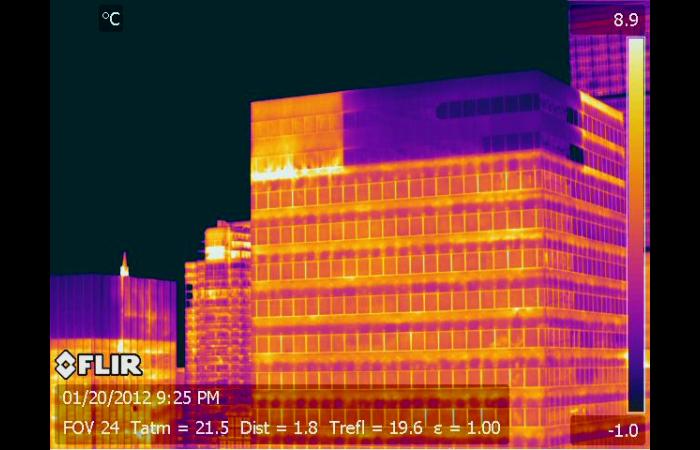Temperature Differentials for Infrared Building Inspections – Part 2
Sponsored by:

Tip written by: Infraspection Institute
A common question among thermographers is, “How much temperature differential is needed to obtain good data?” In this two-part Tip, we discuss required temperature differentials for infrared inspections of buildings.

Proper conduct of any infrared inspection requires that a detectable temperature differential or Delta T is associated with the sought-after defect at the time of inspection. For infrared inspections of buildings and their subsystems, the appropriate time for an infrared inspection will depend upon, but not be limited to: the type of condition or defect, time of day, local atmospheric conditions, and imaging vantage point.
For detecting latent moisture within EIFS structures or insulated roofs, an inside/outside temperature differential is not necessary. For these applications, the IR inspection is traditionally conducted from outdoors during evening hours following a sunny day. Areas of latent moisture will typically show as warm areas since water will store and retain more solar energy than areas containing dry insulation.
For damage investigations, directly imaging wet building materials will usually result in well-defined amorphously shaped patterns. This application does not require an inside/outside temperature differential or solar loading. Rather, thermal patterns associated with moisture can be readily detected provided that water is evaporating at the time of inspection. For drywall, water may evaporate into the living space or into cavities behind the affected drywall. In most cases, water evaporating from a material will cause wet areas to appear cool.
In addition to the above, detecting latent moisture within or evaporating from building materials assumes a relatively high target emittance. Low emittance surfaces associated with metal building facades or roofs coated with aluminum paint may not lend themselves to an accurate infrared inspection.
Lastly, all infrared data should be verified by independent means, as appropriate. This testing may include visual and/or invasive moisture meter readings.
Infrared inspection of buildings is one of the many topics covered in the Infraspection Institute Level I Certified Infrared Thermographer® training course. For more information or to register for a course, visit Infraspection Institute or call us at 609-239-4788.

